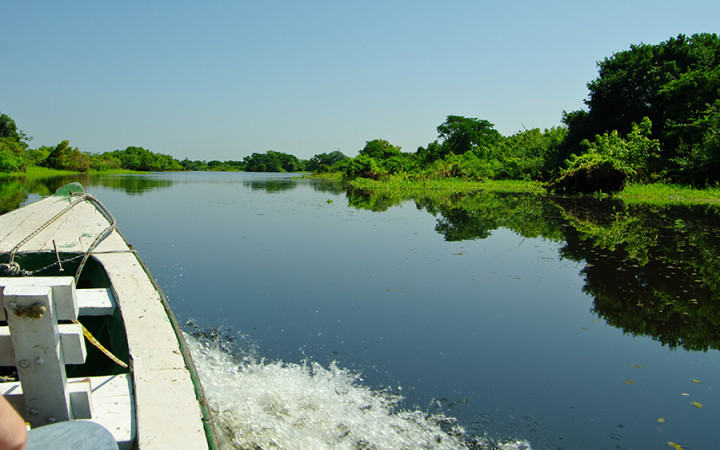Today’s Wonder of the Day was inspired by Taran . Taran Wonders, “The Amazon River flows through which country?” Thanks for WONDERing with us, Taran !
Imagine you're one of the first explorers ever to traverse the vast rainforests of South America. You've heard rumors of a powerful river that flows through the forest. One day, you begin to hear the sounds of flowing water.
You continue to use your machete to hack through the dense vegetation that hides the sound of the mighty water. Then, suddenly, you step out of the brush and find yourself on the banks of the legendary Amazon River.
If you took a ride on the Amazon from its headwaters in the mountains of Peru to where it ends in a massive delta on the Atlantic Ocean, you'd be in for a ride of over 4,000 miles. For years, the scientific consensus has been that the world's longest river is the Nile in Egypt.
However, Brazilian scientists have recently claimed that the Amazon is longer. They believe it begins in another part of the Peruvian mountains that would add many miles to its length.
Regardless of whether their claims are validated, the Amazon will still be the world's largest river by volume. It cuts across Peru, Colombia, and Brazil. It features scary piranhas, dangerous black caimans, and the world's largest river dolphins.
It lacks one thing, though, that makes it different than most rivers: bridges. Over the course of its 4,000-mile-plus length, not a single bridge crosses the Amazon River. It cuts a continent nearly in half and, to cross its width, you're going to need a boat.
In today's modern world of amazing technology and spectacular engineering, it seems odd that a bridge has never been built over the Amazon. Is it even possible?
There certainly are challenges to engineering a bridge across the Amazon. While it's nowhere close to too wide to bridge during the dry season, the river routinely rises over 30 feet in the rainy season. This can turn a river crossing that's usually three miles into 30 miles or more during the rainy season.
Additionally, the banks of the Amazon are comprised of soft sediment that constantly erodes. The river is also filled with debris and floating islands of vegetation that can measure up to 10 square acres.
These engineering challenges aren't impossible to overcome, however. So why aren't there any bridges across the Amazon? Simply put, they're just not necessary.
The Amazon River Basin is so sparsely populated that there are very few roads that could even be connected. If you want to travel throughout the Amazon rainforest, you simply take the river itself.
The millions of people who live near the Amazon get by just fine using boats and ferries. A two-mile-long bridge was recently built across the Rio Negro, the Amazon's largest tributary. The bridge connects the cities of Manaus and Iranduba in Brazil.
While the people in Manaus and especially Iranduba welcomed the new bridge, environmentalists worry about the impact it and possibly other bridges may have on the surrounding rainforests. Experts note that bridges are a first step toward further development, which in the past has led to deforestation.




